To watch Locus of Control is to follow Jason Bayani through his growing up: his addictions, depressions, and loneliness; his relationships and break-ups; his first steps toward sobriety and antidepressants. It is to take a journey with him, to watch these threads ravel and unravel alongside stories ranging from his childhood and parents in Fremont to the Philippines and of Filipino history.
Locus of Control is a journey through time, complete with performance poetry and hip-hop beats streaming out from behind Bayani’s turntables. We watch documentaries projected behind him that establish the workings of colonialism and explore the history of the housing markets that led to his parents to move to Fremont. We learn of the Filipino DJ scene, of Bayani’s move to Austin and experience getting lost there. We learn of Bayani’s brother, touring Europe with Cirque du Soleil. And, eventually, we see all these disparate threads converge when Bayani heads to Munich to do a reading and meets up with his brother across the ocean.
For Bayani, Munich is a magical place where “the streets are a series of gears; the metal and the motor; all of it turning; the great wheel of time.” It’s a place where the city itself comes to signify time and history, with Bayani caught in the middle of it. And in this blurring of place and time—of personal and historical—we begin to understand why Bayani’s show is so important.
 Munich is a wholly foreign place to Bayani, neither Filipino nor American. In this foreignness, Bayani allows for time, also, to become foreign to us, writing, “It is breaking me; I am broken; I came here broken. I can say that now. There is enough time.” Munich is magical not for its distance from California alone, but for the way in which time is changed in a place that Bayani finds so disorienting. Time becomes the actor; it grants Bayani the chance to speak. He surrenders to it, he enters under its control, it gives him permission. The city and its chronology contain him inside of it.
Munich is a wholly foreign place to Bayani, neither Filipino nor American. In this foreignness, Bayani allows for time, also, to become foreign to us, writing, “It is breaking me; I am broken; I came here broken. I can say that now. There is enough time.” Munich is magical not for its distance from California alone, but for the way in which time is changed in a place that Bayani finds so disorienting. Time becomes the actor; it grants Bayani the chance to speak. He surrenders to it, he enters under its control, it gives him permission. The city and its chronology contain him inside of it.
But Bayani’s work is not satisfied with establishing any clear-cut world—the power structures that he builds up are always temporary, and soon, Bayani is back in the driver’s seat. As he leads us through his poems, we feel how memories and their narratives can shift power structures, even subverting his own power as performer: “Am I a reliable narrator? Do you trust me? Does it matter? I can only tell a story.” 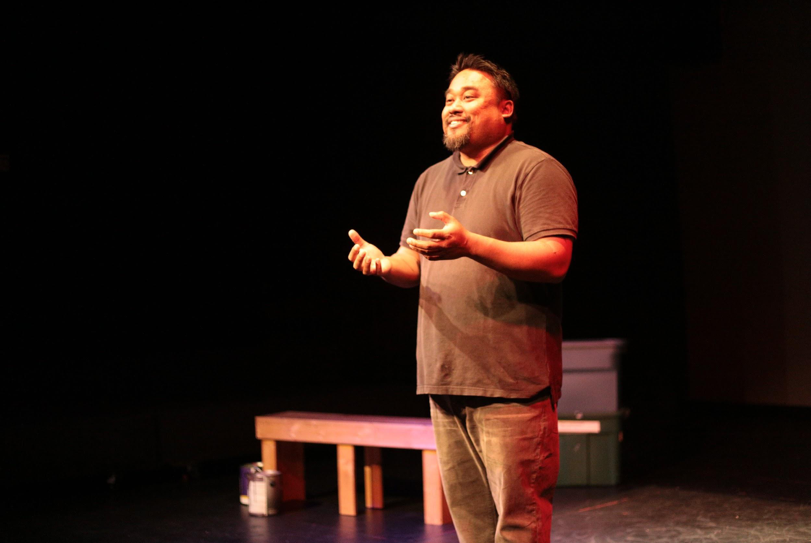
This disjointed memory and narration runs through the entire show, moving between bodies and buildings, announcing the present while Bayani plays childhood videos from the past. His narration always challenges itself, challenges the audience, and forces us to pay attention to this slippage.
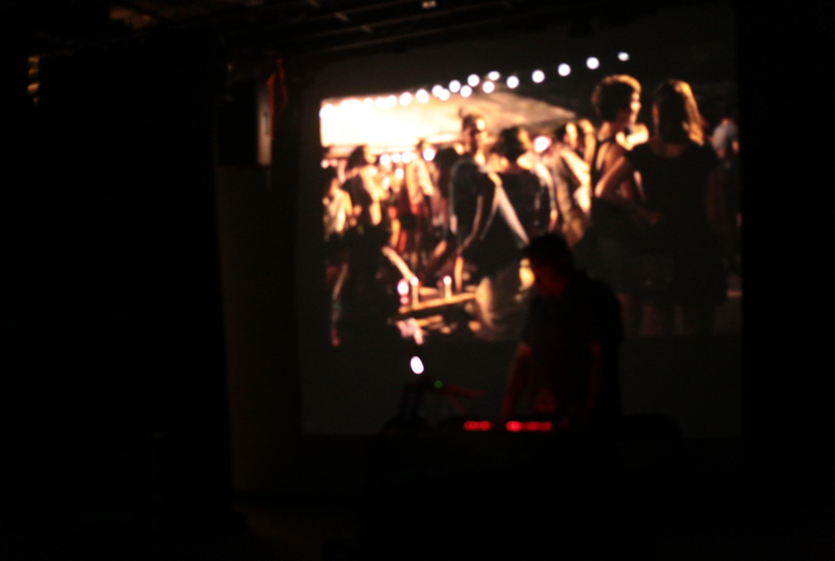 What emerges from these movements is a locus of power that continually shifts between the city and the personal. We take Fremont, Austin, and Munich as places from Bayani’s life where memory becomes a project, a texture, the recitation of buried histories. And he eventually arrives back in San Francisco:
What emerges from these movements is a locus of power that continually shifts between the city and the personal. We take Fremont, Austin, and Munich as places from Bayani’s life where memory becomes a project, a texture, the recitation of buried histories. And he eventually arrives back in San Francisco:
“I make myself small, but I’m trying to figure out / how to write the Filipino story big in this city. / How many lights of ours been dissipating / in the neighborhood and we still out here / illuminating the block.”
How do we maintain ownership in a city where half of all resident income goes to paying rent? If the city in its enforced poverty, gentrification, and willful forgetfulness refuses to protect and remember, then the onus of remembrance falls upon those “illuminating the block.” Memory becomes a sort of pride wrapped up in presence: shining, staying put, resisting. “We still out here.”
It’s a powerful moment, one that questions ownership and belonging. Bayani goes as far as to reconfigure history against his own body: “Watch me now. / Watch me fit it all / onto the whorl of my thumb.” By making the body impossibly large and reconfiguring the city against its landscape, by putting his own body first in all things, Bayani opens up a space in which revolutionary love becomes possible. By making the city a part of him, we see a person struggling to love what does not love him back. We see a person holding on to a city that will not hold on to him. It’s both a demand to be seen and to be caught in the act of self-love. 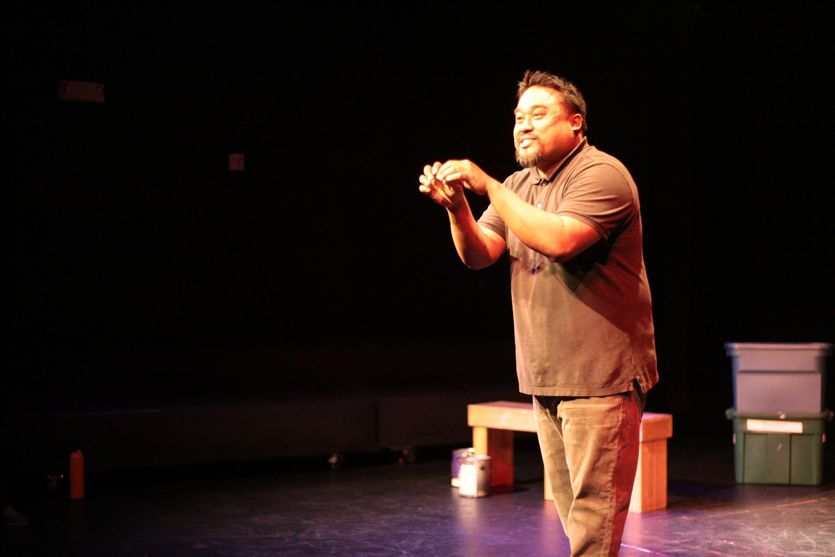
Indeed, Bayani’s entire performance demands to be seen in the act of self-love, which, in his formulation, is also the act of making history tangible, remarkable, embodied. Bayani’s show offers us poems-in-the-flesh, an expertly choreographed orchestration of a poetics that’s focused on the physical and mental health of one’s body, the intersectional identity of one’s body, and the way in which histories converge at those intersections. How else to speak of the body, but with the body? It’s through these moments of embodiment that we find in Locus of Control a love song, a Kundiman. And we learn that this love isn’t an escape, but a confrontation.
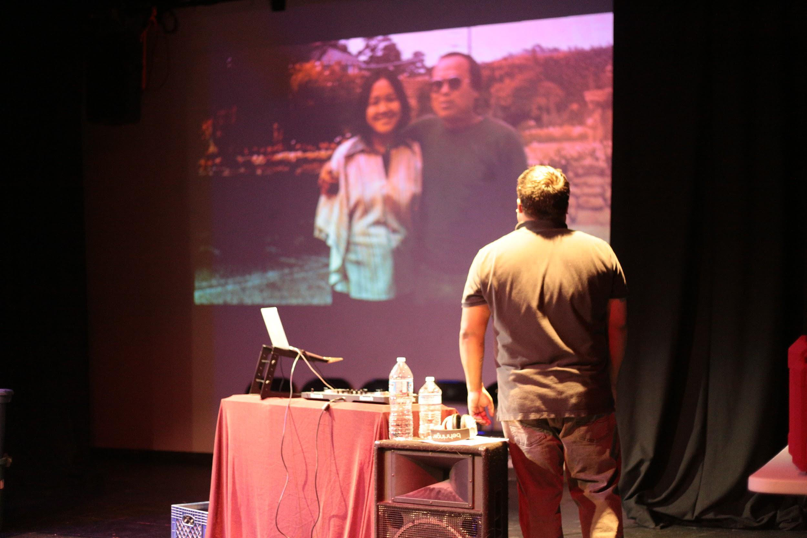
One of the most important moments of the show is when Bayani describes the Kundiman as a “serenader song, melodious, heavy on sentiment.” He tells us, “It wouldn’t be Filipino if you didn’t put a little extra on it. The most famous song in this genre is “Dahil sa Iyo” (Because of You): “Because of you, I want to live.”
Bayani plays his parents’ favorite version of the song, sung by Nat King Cole, recorded when Cole visited the Philippines in 1961. As it plays, we feel the past converge with the present and distances collapse—it feels as if Bayani’s family enters the room, their love surrounding us through the memory of this song. Our bodies, in the presence of a beloved song, become an embodied whole, sites of Filipino memory both personal and historical. We see family images on screen, and Bayani’s show asks us to hold these memories together. Bayani explains, “They say that during Spanish colonization people would sing these Kundimans and this romantic love would serve as metaphor for their love of their people and their land. We had to hide these sentiments in music.”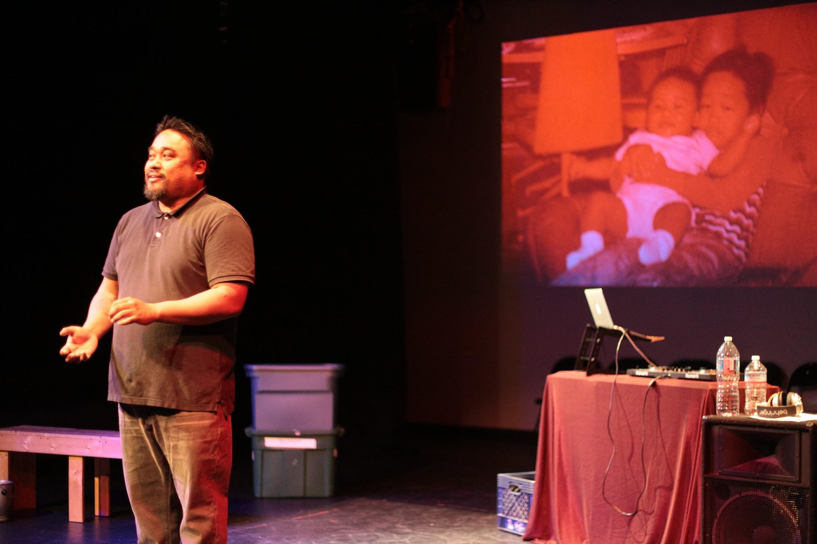
Moments like these show us how the Kundiman can be a loving, subversive refusal. Locus of Control addresses years of colonizations and violence against Filipinos and Filipino Americans. It confronts personal loneliness through the social: war, diaspora, displacement, gentrification, for-profit cities, and the intersections of racism and capitalism. It collapses distances, makes it difficult to distinguish among feelings generated in the divide, between what is mine and what is ours.
Bayani’s take on “Dahil sa Iyo,” his take on revising an impersonal and official colonial memory, creates in us a yearning for a love beyond the confines of the American colonial project. It is early in the show that Bayani establishes these confines:
“How do we tell our stories when we become just another room in this great, big house of America? When the door that had led them in becomes the same door that leads our people out—into more rooms that are still America? And always I am told, are you not grateful to have a room?”
Here is the true magic of Bayani’s show: It both gives us the metaphor of this room and offers us the chance to leave. It grants us the space to yearn for more, for the desire for life beyond just survival. More is creation and art and music, the glue that holds communities together: Bayani as DJ at his turntables, filling the room with a life located somewhere beyond this breaking point. The way a breakbeat brings generations together on the dance floor, the way a break-up makes room for moving on, Bayani leads us through this. He offers this breaking to us, so that we might join him and learn something of ourselves, too:
“This morning my homie tells me maybe it isn’t loss / that I’m born into but possibility. Always on the verge / of arrival.”
Perhaps most importantly, Bayani’s love asks the question: How do we move beyond a resilience that takes colonialism and displacement as its baseline? He asks, “At what point are we just sitting here celebrating our ability to endure abuse? If we do love each other, then we have to believe that we are not disposable. That we have every right to exist.”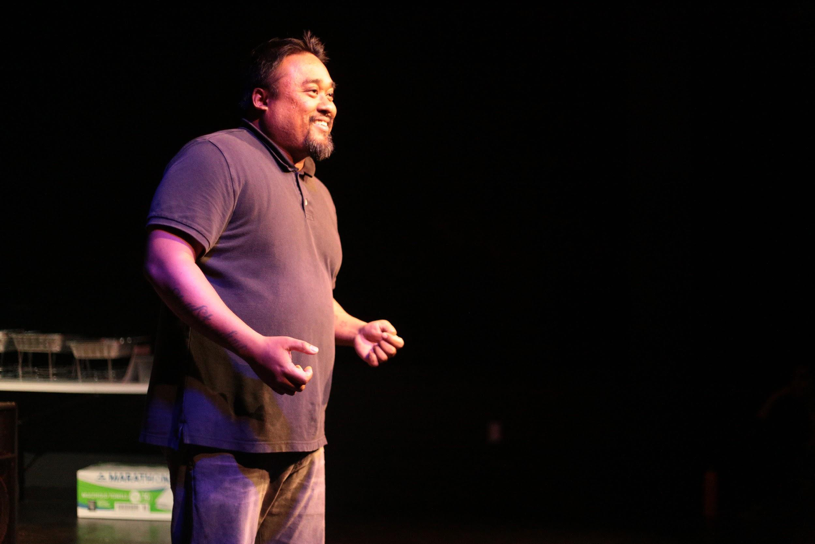
Bayani’s work pushes us to believe in something beyond making space for ourselves in cities, in memory. It pushes us to believe that memory is not something we hold in the past, but something that can inform love and belonging in the future. Bayani’s work is simultaneously an homage to the past, the resuscitation and recitation of cultural and personal memory, and the refutation of a colonial memory that seeks to forget our narratives. It posits our memories as futurity, as the antidote to disconnections caused by years of enforced unbelonging. In memory, there is love. Love that does not forget or collapse or avoid; love that sustains us in our fight for social change. For Bayani, “love is both amorous and revolutionary.”
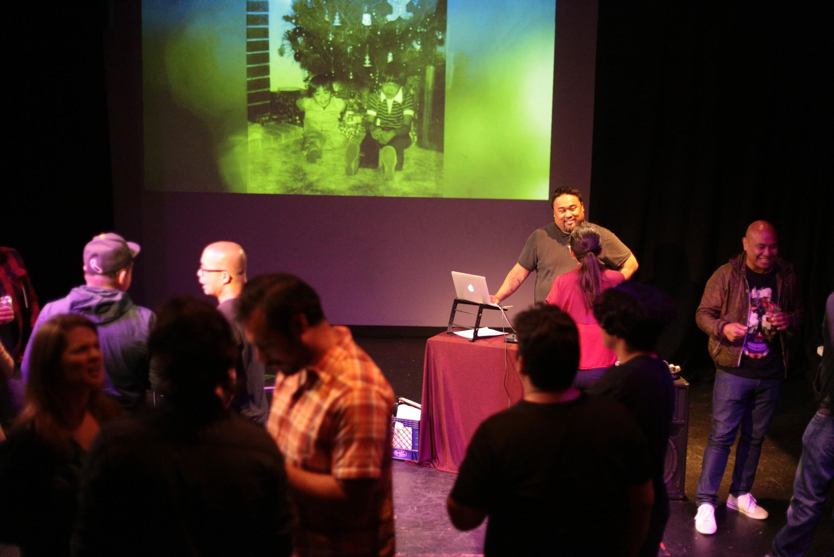
“Each song I play is a memory. I’m sure someone would tell me, ‘you’ll remember the important ones,’ but I want all of it. The whole damn thing.”











Comments